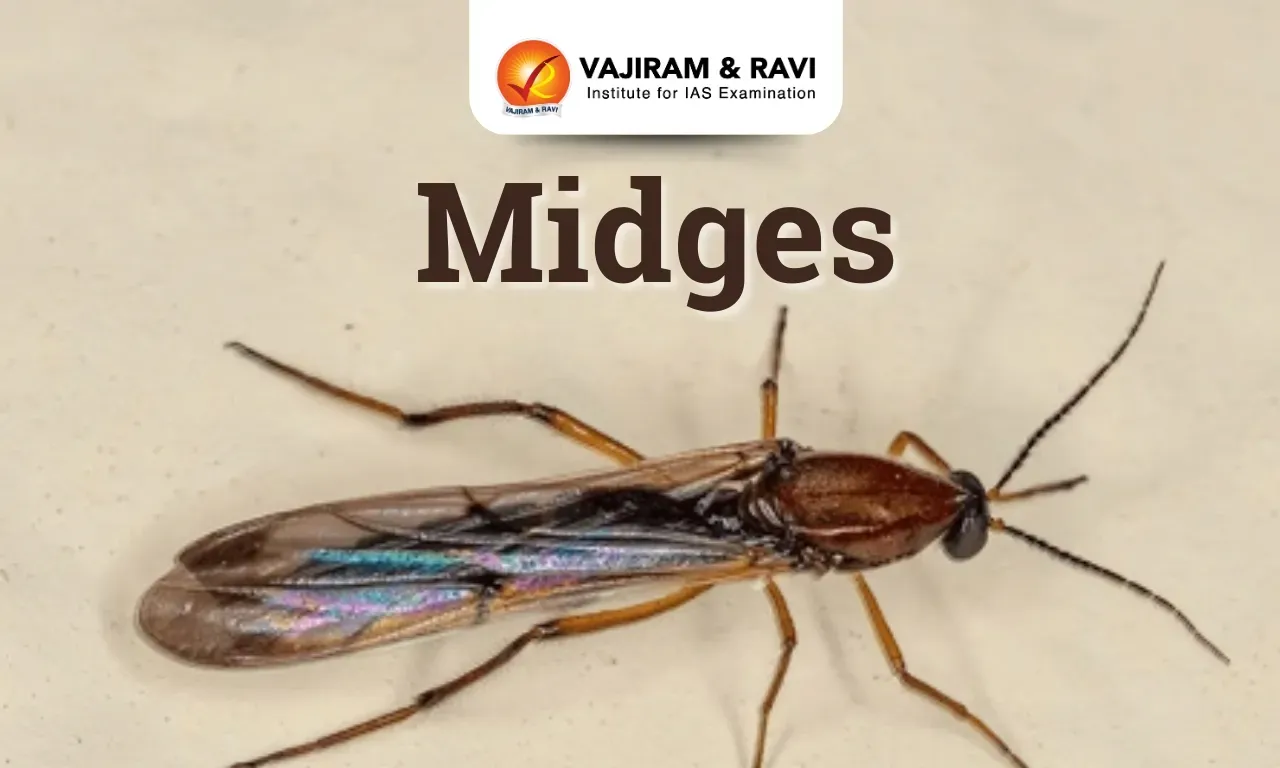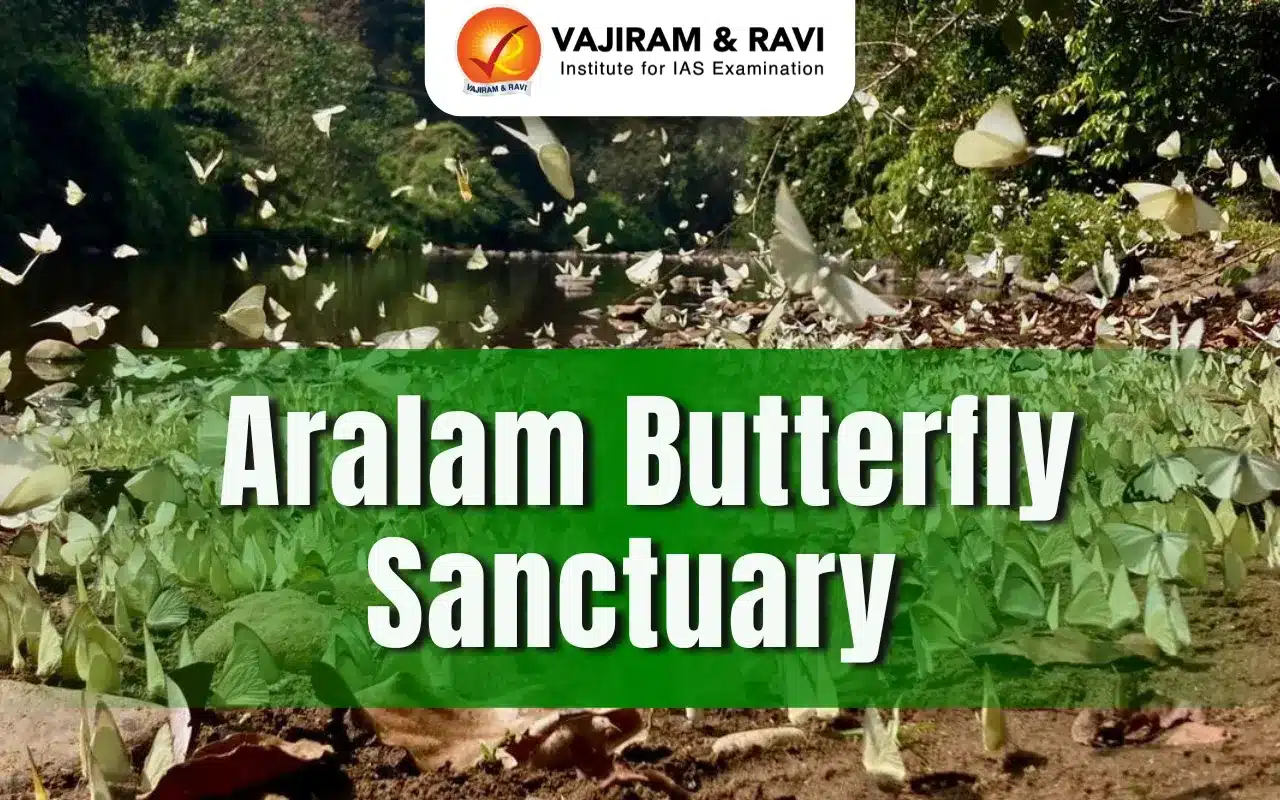About Midges:
- These are tiny insects which are similar in appearance to flies but are more closely related to mosquitoes in their feeding habits.
- They belong to the Culicoides genus and are locally called bhusi files.
- Food habit: These flies feed on the blood of livestock such as sheep, goats, and cattle, as well as wild animals like deer.
- Amongst them five species are known to transmit the bluetongue disease virus which is a condition that can be fatal to livestock.
- Bluetongue disease manifests through symptoms including blue discolouration of the tongue, fever, facial swelling, and excessive salivation.
- It can potentially lead to death in affected animals and poses a significant threat to livestock farming and the agricultural economy.
- The study, conducted in 2022 and 2023, revealed that 17 of the 23 species identified are known to bite humans, although no human disease transmission has been reported.
- The 13 new species recorded for India are C. barnetti, C. gouldi, C. flaviscutellaris, C. flavipunctatus, C. hui, C. histrio, C. guttifer, C. perornatus, C. okinawensis, C. quatei, C. obscurus, C. coronalis, and C. kusaiensis.
- The Indian Culicoides fauna now includes 93 valid species, many of which are recognised as confirmed or potential vectors of important pathogens of animal health.
Key facts about Culicoides
- Distribution: It isa large genus of the family Ceratopogonidae with cosmopolitan distribution excluding New Zealand and Antarctica, includes species that are among the smallest haematophagous members of the order Diptera.
- The midges of this family are gaining significant attention due to their role as vectors of almost 60 viruses, 40 protozoans, and 24 filarial nematodes, impacting not only livestock and wildlife but also humans.
Q1: What disease is transmitted by midges?
Bluetongue virus is spread by biting midges and causes severe disease in ruminants. Bluetongue virus (BTV) is responsible for causing the severe haemorrhagic disease, bluetongue (BT). It can infect domestic ruminants including cattle, sheep and goats, along with wild animals such as buffalo, deer, antelope and camels.
Source: TH
Last updated on January, 2026
→ Check out the latest UPSC Syllabus 2026 here.
→ Join Vajiram & Ravi’s Interview Guidance Programme for expert help to crack your final UPSC stage.
→ UPSC Mains Result 2025 is now out.
→ UPSC Notification 2026 is scheduled to be released on January 14, 2026.
→ UPSC Calendar 2026 has been released.
→ UPSC Prelims 2026 will be conducted on 24th May, 2026 & UPSC Mains 2026 will be conducted on 21st August 2026.
→ The UPSC Selection Process is of 3 stages-Prelims, Mains and Interview.
→ Prepare effectively with Vajiram & Ravi’s UPSC Prelims Test Series 2026 featuring full-length mock tests, detailed solutions, and performance analysis.
→ Enroll in Vajiram & Ravi’s UPSC Mains Test Series 2026 for structured answer writing practice, expert evaluation, and exam-oriented feedback.
→ Join Vajiram & Ravi’s Best UPSC Mentorship Program for personalized guidance, strategy planning, and one-to-one support from experienced mentors.
→ UPSC Result 2024 is released with latest UPSC Marksheet 2024. Check Now!
→ UPSC Toppers List 2024 is released now. Shakti Dubey is UPSC AIR 1 2024 Topper.
→ Also check Best UPSC Coaching in India

















